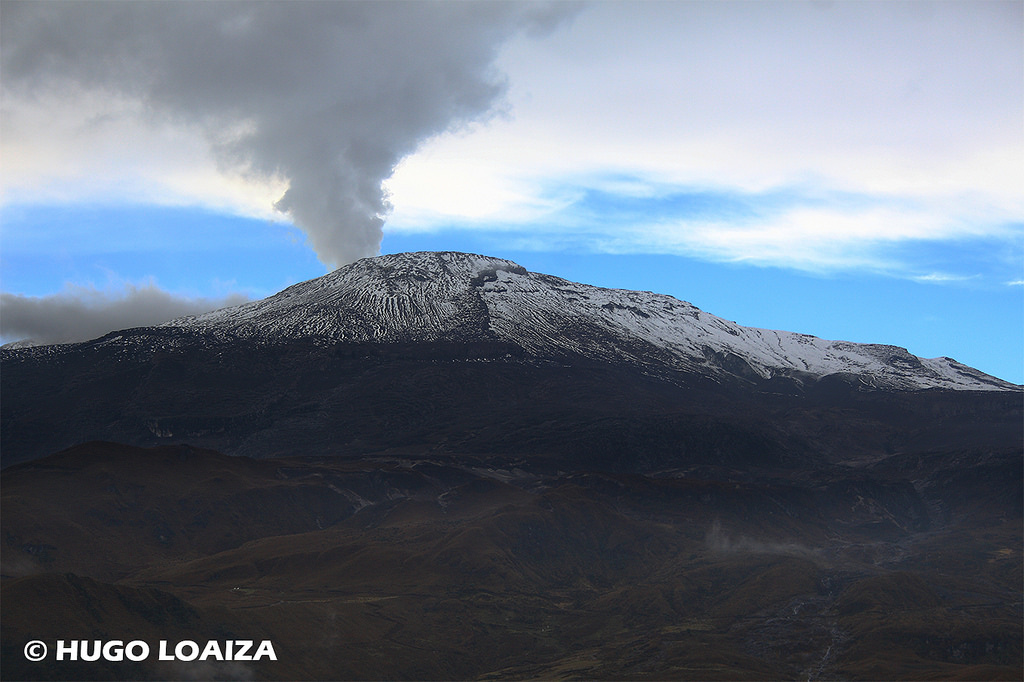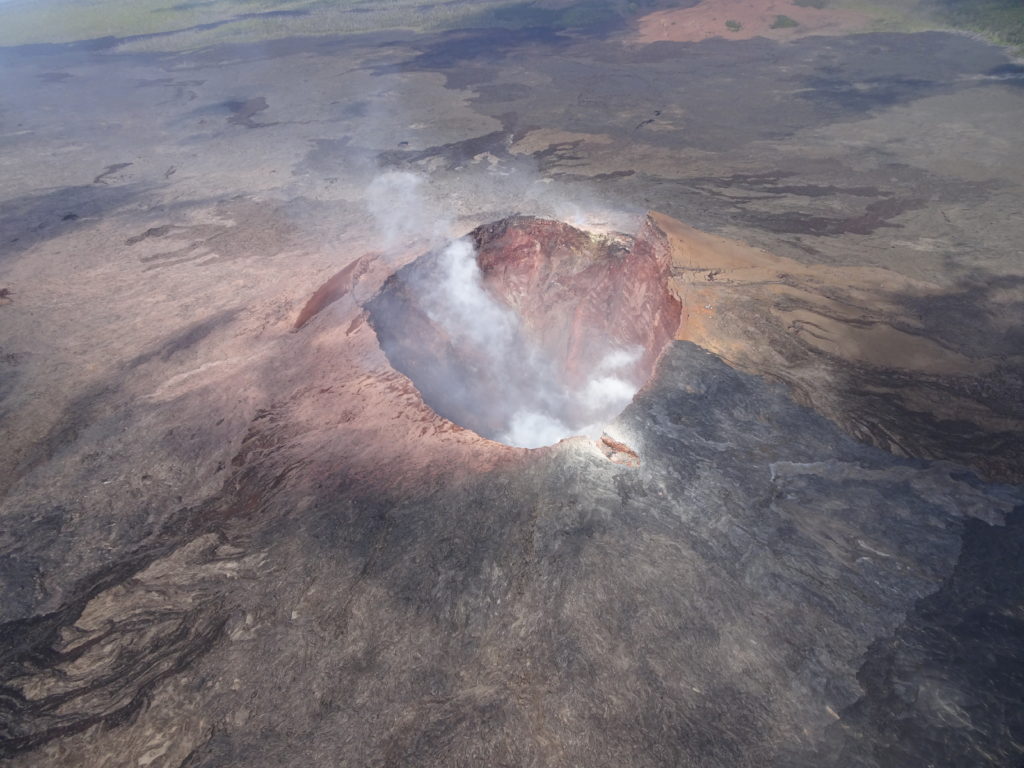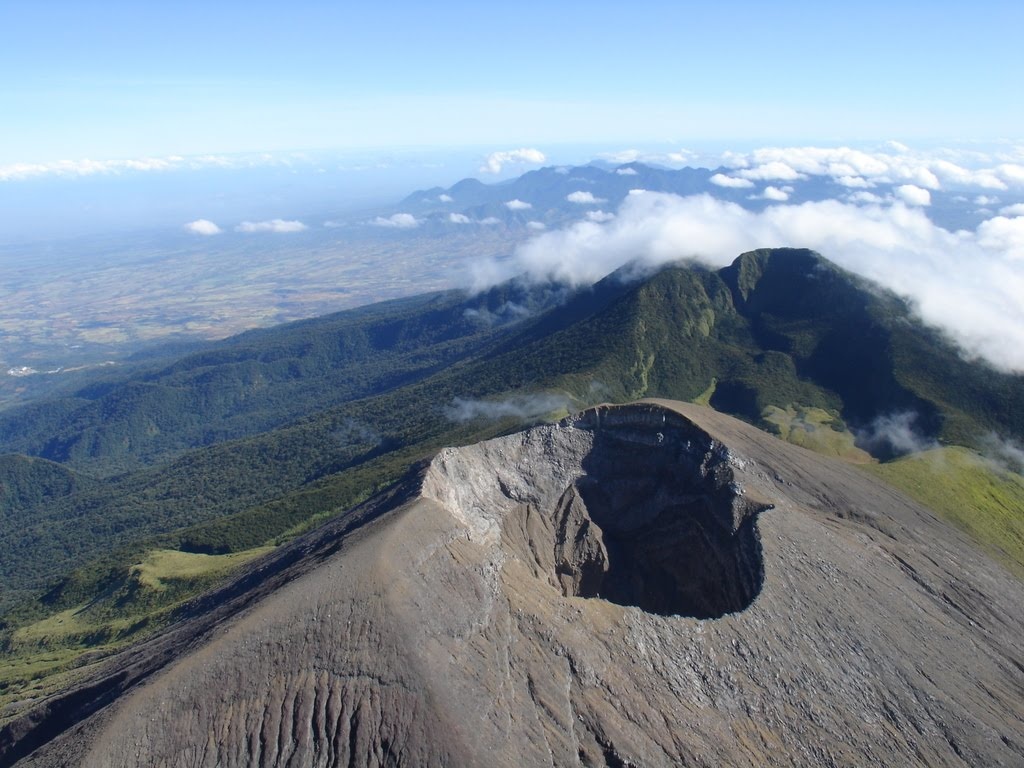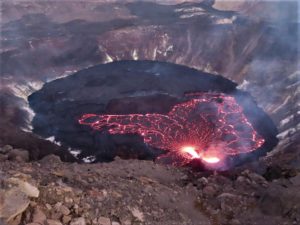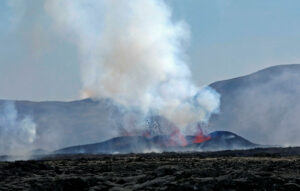July 19 , 2018.
Colombia , Nevado Del Ruiz :
Subject: Bulletin of activity of the Nevado del Ruiz volcano.
The level of activity continues at the level: Yellow activity level or (III): changes in the behavior of volcanic activity.
With regard to monitoring the activity of the Nevado del Ruiz volcano, the COLOMBIAN GEOLOGICAL SERVICE informs that:
During the last week, the seismicity caused by the fracturing of the rocks that make up the volcano showed a decrease in the number of earthquakes and released seismic energy, compared to the previous week. The earthquakes were located mainly in the South-East and South-West areas of the volcano, at depths between 1.9 and 4.5 km. The other active sectors during the week were the Northeast and Northwest sources of the volcanic structure, as well as the Arenas crater, at depths between 1.1 and 7.9 km. The maximum magnitude recorded during the week was 0.7 ML (local magnitude) for the earthquake that occurred on July 15 at 20:48 (local time), located 2.5 km southeast of the Arenas crater, at a depth of 3.6 km.
The seismic activity associated with the dynamics of the fluids within the channels of the volcanic structure presents increasing number of earthquakes and released seismic energy, compared to the previous week. This type of activity was mainly characterized by the occurrence of events of long period type, very long period and pulsations of volcanic tremors. The earthquakes were mainly located in the crater of Arenas and its surroundings.
The volcanic deformation measured from electronic inclinometers, Global Navigation Satellite System (GNSS) stations and radar images, has so far shown stability behavior without recording significant deformation processes of the volcanic structure.
The volcano continues to emit into the atmosphere water vapor and gases, among which sulfur dioxide is distinguished (SO2), as evidenced by the values obtained by the SCANDOAS stations installed in the region of the volcano, and the analysis of satellite images, which showed an increase during the last evaluation periods. In tracking information provided by the NASA, FIRMS and MIROVA portals, a low energy thermal anomaly was recorded during this week.
The column of gas and steam reached a maximum height of 600 meters measured at the top of the volcano on July 11th. The direction of the dispersion of the column was governed by the direction of the wind in the zone, which during the week prevailed towards the West – Northwest relative to the crater Arenas.
The Nevado del Ruiz volcano continues at the level of yellow activity.
Source : SGC.
Photo : IDEAM , Hugo Loaiza
Hawai , Kilauea :
Wednesday, July 18, 2018, 11:23 AM HST (Wednesday, July 18, 2018, 21:23 UTC)
19°25’16 » N 155°17’13 » W,
Summit Elevation 4091 ft (1247 m)
Current Volcano Alert Level: WARNING
Current Aviation Color Code: ORANGE
Kīlauea Volcano Lower East Rift Zone
Fissure 8 continues to erupt lava into the perched channel leading northeastward from the vent. An increase in lava supply overnight produced several channel overflows threatening homes on Nohea street and additional overflows downstream on both sides of the channel .
https://www.facebook.com/ryanfinlay/videos/10155910658560749/
The overflows had stalled by mid-morning. South of Kapoho Crater, the surge produced an ʻaʻā flow that rode over the active southern flow that is still entering the ocean. The southern margin of the flow is located about 700 m (0.4 mi) from the boat ramp at Isaac Hale Park this morning. Despite no visible surface connection to the fissure 8 channel, lava continues to ooze out at a few points on the 6 km (3.7 mi) wide flow front into the ocean.
No other fissures are active this morning.
Kīlauea Volcano Summit
At 1:28 a.m. HST July 18, a collapse event occurred beneath the summit of Kīlauea with energy equivalent to a magnitude-5.3 earthquake. Seismicity at the summit decreased immediately following the event; however, activity should increase leading up to the next collapse/explosion event, which is expected to occur tomorrow.
During a helicopter overflight on July 13, 2018, USGS scientists captured this image of Pu‘u ‘Ō‘ō. On April 30, 2018, the Pu‘u ‘Ō‘ō crater floor collapsed and an intrusion of magma migrated down Kīlauea’s East Rift Zone, advancing below ground toward the lower Puna District, leading to a series of fissure eruptions in the Leilani Estates subdivision. Since then, detected volcanic activity at Pu‘u ‘Ō‘ō has been minimal.
Source : HVO
Video : USGS / Ryan Finlay .
Philippines , Kanlaon :
KANLAON VOLCANO BULLETIN 19 July 2018 08:00 A.M.
Kanlaon Volcano’s seismic monitoring network recorded eight (8) volcanic earthquakes during the past 24 hours. Ground deformation data from continuous GPS measurements indicate a more pronounced inflation of the edifice since December 2017, signifying pressurization deep beneath the edifice. Sulfur dioxide (SO2) emission was measured at an average of 2,131 tonnes/day on 04 July 2018.
Alert Level 2 status prevails over Kanlaon Volcano, which means that the volcano is undergoing a moderate level of unrest due to probable intrusion of magma at depth that may or may not lead to a magmatic eruption. The local government units and the public are strictly reminded that entry into the 4-kilometer radius Permanent Danger Zone (PDZ) is strictly prohibited due to the further possibilities of sudden and hazardous steam-driven or phreatic eruptions. Civil aviation authorities must also advise pilots to avoid flying close to the volcano’s summit as ejecta from any sudden phreatic eruption can be hazardous to aircraft.
DOST-PHIVOLCS is closely monitoring Kanlaon Volcano’s activity and any new development will be relayed to all concerned.
Source : Phivolcs
Indonesia , Anak Krakatau :
Level II Activity Level (WASPADA). The Anak Krakatau (305 m above sea level) has increased its volcanic activity since June 18, 2018. Since yesterday and until this morning, the weather is clear / cloudy and visibly clear until the fog arrives, no longer allowing to observe the smoke of the crater. The wind was blowing weakly to the northeast.
The seismograph, on July 18, 2018, recorded:
272 earthquakes of eruption.
130 earthquake emission
38 shallow volcanic earthquakes
2 deep volcanic earthquakes
A continuous tremor with an amplitude of 1 to 30 mm (dominant value: 10 mm)
Recommendations:
The company / tourists are not allowed to approach the crater within a radius of 1 km.
VONA:
VOLCANO OBSERVATORY NOTICE FOR AVIATION – VONA.
Issued: July 17 , 2018.
Volcano:Anak Krakatau (262000)
Current Aviation Colour Code: ORANGE
Previous Aviation Colour Code: orange
Source: Anak Krakatau Volcano Observatory
Notice Number: 2018KRA17
Volcano Location: S 06 deg 06 min 07 sec E 105 deg 25 min 23 sec
Area: Lampung, Indonesia
Summit Elevation: 976 FT (305 M)
Volcanic Activity Summary:
Eruption with ash clouds at 09:51 UTC (16:51 local time). The eruption lasted for 44 seconds. Eruption and ash emission is continuing.
Volcanic Cloud Height:
Best estimate of ash-cloud top is around 2576 FT (805 M) above sea level, may be higher than what can be observed clearly. Source of height data: ground observer.
Other Volcanic Cloud Information:
Ash-cloud moving to north.
Remarks:
Eruption recorded on seismogram with maximum amplitude 30 mm and maximum duration 44 second.
Source : PVMBG , Magma Indonésie.
Video : Aris Yanto .
Photo : Shutterstock/File/The jakartapost.



